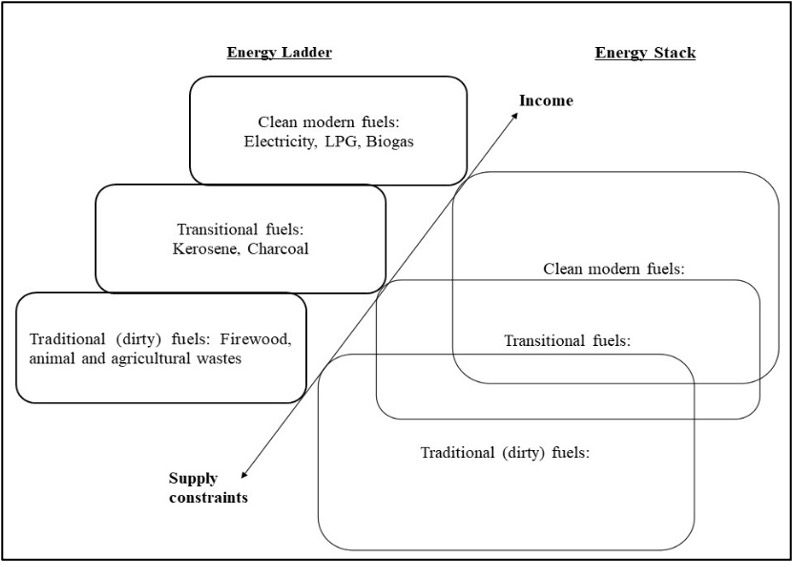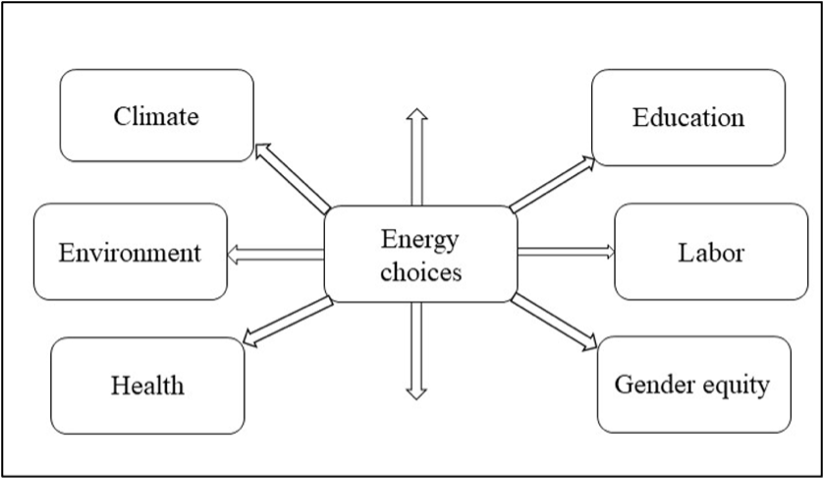
The coronavirus disease (COVID-19) pandemic has had devastating impacts on South Asian economies and livelihoods, resulting in long-lasting adverse socioeconomic consequences that have pushed households into poverty, unemployment, and substantial inequality. Economic activities almost froze during the lockdowns, with record dips in economic growth (including a growth retraction in India of 23.9% during the April–June quarter of 2020–2021), and heightened public health concerns are expected to have long-term impacts on regional economic recovery.
The pandemic has also exposed structural vulnerabilities, providing opportunities to design sustainable and more resilient economies for the future. While making plans for regional economic recovery, it is crucial to understand the consequences the pandemic has inflicted on households and their wellbeing. With energy being vital for the welfare of households, policy makers must consider the possible impacts of the pandemic on households’ energy choices and their access to clean fuels. Households should be assured access to affordable, reliable, and clean energy, even amid the ongoing health crisis, new supply-chain bottlenecks, and government priorities. These endeavors will ensure households’ energy modernization—the process of climbing up the energy ladder and enabling the consumption of clean energy for household chores—as shown in Figure 1. These policy attempts can preserve what countries have achieved so far after decades of concerted policy efforts and contribute significantly to coping with the increased poverty and social inequality resulting from the pandemic. Energy is key to empowering families, improving livelihoods, and minimizing social inequality and is, therefore, included in the United Nations Sustainable Development Goals (SDG7).
Due to the lockdowns and other precautionary measures imposed to curb the spread of the virus, factories were closed, migrant workers returned to their native places, people switched to remote working where feasible, and children began remote schooling. This led to dramatic changes in South Asia’s electricity demand and consumption patterns. For example, in Bangladesh alone, Alavi et al. (2022) estimate that total electricity demand declined by as much as 50% during the initial lockdowns. Similarly, Indian electricity demand changed significantly in response to the pandemic (Dattakiran 2020). However, because of public health concerns, it was difficult for electricity generators and providers to adjust to this dramatic transformation, and it was challenging to dispatch technicians to support the new electricity consumption patterns and maintain a reliable electricity supply. Also, the pandemic hindered critical construction work of a few hydroelectricity plants in Nepal (Baskota 2020). Thus, the pandemic impacted the region’s consumption, generation, and electricity transmission.
Additionally, closures of shops, local stores, and the impairment of transport systems limited households’ access to liquefied petroleum gas (LPG), or cooking gas. Prices of LPG may have soared unnaturally compared to regular times due to supply shortages, causing people living in villages and semi-urban areas to go to forests to secure their energy needs instead of local markets—this could also have happened due to fear of the virus. These factors may have derailed household energy modernization drives in South Asian countries, causing average families with limited savings to slide back toward inferior fuels. This case is likely, as Herington and Malakar (2016) observed that households slid back down the energy ladder amid the 2015 humanitarian crisis in Nepal. Koirala and Acharya (2022) also confirmed the negative impacts of crises on households’ energy transition, arguing that the distortionary forces of crises, such as supply constraints, tend to reverse progress toward energy modernization, as shown in Figure 1.
Figure 1: Competing Theories (Energy Ladder and Energy Stack) Explaining the Process of Household Energy Modernization
 Source: Adapted from Koirala and Acharya (2022) and Van Der Kroon et al. (2013).
Source: Adapted from Koirala and Acharya (2022) and Van Der Kroon et al. (2013).
Thus, a few critical questions arise from the ongoing pandemic: How has the pandemic impacted households’ energy transition in South Asia? Has a significant share of the population returned to locally available inferior fuels, such as firewood and dung? Could there be any heterogeneous energy choice behaviors across different economic strata? These questions, among others, are of policy concern because utility-maximizing households facing possible job losses and limited (or no) savings might make some tradeoffs between food and fuels. These tradeoffs become even more necessary amid increasing food and commodity prices. Thus, the consumption of locally available, cheap, or possibly free fuels might help them maintain energy security while ensuring their purchasing capacity for other necessary goods. Evidence of such tradeoffs has already started to emerge from different regions. For instance, Shupler et al. (2021) find that a quarter of informal urban settlement households using LPG switched their cooking fuel to wood or kerosine during the lockdowns in Kenya. They also found increased food insecurity among such families. Although relevant studies are yet to surface from South Asia, the region—already home to a vast food insecure population—is also expected to have similar malnutrition problems that have possibly been exacerbated by the pandemic.
Energy transition in developing countries is not a standalone concept. It is inherently related to overall social development, justice, and gender equity, etc., as shown in Figure 2. For example, clean cooking saves enormous health costs, reduces air pollution, and helps conserve forests. It is efficient, improves productivity, and allows people to engage in better income-generating activities. It also contributes to the empowerment of women who would otherwise be considered primarily responsible for collecting firewood and securing energy needs for their families. Thus, to cope with COVID-19-induced poverty and inequality, it is also essential to work toward households’ energy security to help countries recover quickly from the aftermath of the pandemic. This could be a perfect opportunity for governments to promote clean energy sources through consultation, regional dialogue, and collaboration.
Figure 2: Households’ Energy Choices and Their Interlinkages with Other Aspects of Development
 Source: Prepared by the authors.
Source: Prepared by the authors.
Regulatory efforts
The shockwaves generated by COVID-19 and its variants have induced significant stress at the household level in South Asia. Thus, households may require institutional support to rebound, recover, and achieve the needed minimum welfare. In this context, some positive policy efforts are already being adopted by governments in the region. For example, a tariff structure adopted in Bhutan provides free (hydro) electricity to its rural (0–100 kWh) and geographically disadvantaged (0–200 kWh) populations (for more details, see BPC, Electricity Tariff). The Government of India’s effort to guarantee free LPG refills for some of the poorest members of society during the lockdowns was a good exercise and might provide an excellent example for neighboring countries. Similarly, authorities in the region can subsidize clean energy for basic household chores, such as cooking, to support the energy modernization drive among the poor who have been hit hardest by the pandemic. An example of this welfare-maximizing policy recently took place in Nepal, where the government reduced electricity tariffs drastically to support the residential and agricultural use of hydroelectricity. The timing of this regulatory change was particularly propitious.
Governments also need to offer necessary techno-financial support to utility providers so that they can allow their customers to delay paying their bills for some time or not be punished if they are already late in doing so, without hampering their profit-making motives. They can remove taxes on clean energy as Uganda did in June 2020 by removing the value-added tax on LPG. Finally, increasing access to low-interest credit could play a vital role in households’ access to modern energy and broader economic recovery. Banks and cooperatives could play a crucial role in this effort. Such policies could alleviate poverty and inequality in the region and ultimately support regional recovery efforts.
References
Alavi, A., M. S. Sadid, M. Ahmed, and F. Abid. 2022. Effect Analysis of the COVID-19 Pandemic on the Electricity Consumption of Bangladesh. Heliyon 8(1): e08737.
Baskota, R. 2020. Nepal Hydroelectricity Sector Gets COVID-19 Shock, 15 July. Nepali Times.
Dattakiran, J. 2020. Impact of Lockdown on India’s Electricity Sector, 9 June. Energy A.
Herrington, M. J., and Y. Malakar. 2016. Who Is Energy Poor? Revisiting Energy (In)security in the Case of Nepal. Energy Research & Social Science 21: 49–53.
Koirala, D. P., and B. Acharya. 2022. Households’ Fuel Choices in the Context of a Decade-Long Load-Shedding Problem in Nepal. Energy Policy 162: 112795.
Shupler, M., J. Mwitari, A. Gohole, R. Anderson de Cuevas, E. Puzzolo, I. Cukic, E. Nix, and D. Pope. 2021. COVID-19 Impacts on Household Energy & Food Security in a Kenyan Informal Settlement: The Need for Integrated Approaches to the SDGs. Renewable and Sustainable Energy Reviews 144: 111018.
Van der Kroon, B., R. Brouwer, and P. J. H. van Beukering. 2013. The Energy Ladder: Theoretical Myth or Empirical Truth? Results from a Meta-Analysis. Renewable and Sustainable Energy Reviews 20: 504–513.








Comments are closed.